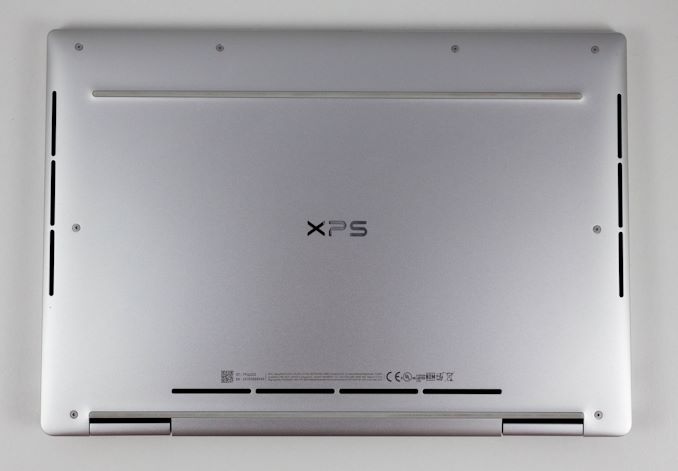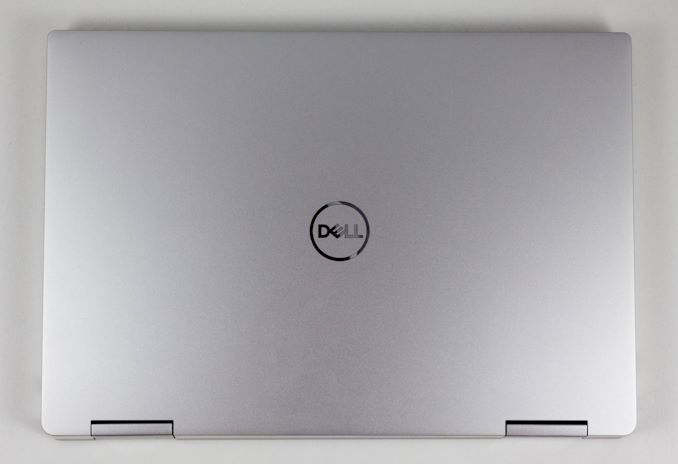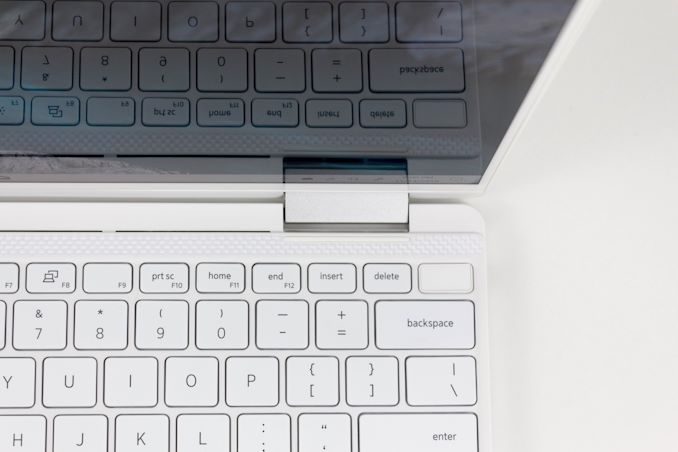The Dell XPS 13 7390 2-in-1 Review: The Ice Lake Cometh
by Brett Howse on November 15, 2019 11:30 AM ESTFinal Thoughts
Dell’s XPS 13 has been one of the most defining laptops in recent memory, having changed the landscape for everyone after introducing the InfinityEdge display at CES in January 2015. Since then, the company has continued to refine their XPS lineup as they were challenged on all sides by other PC makers. The XPS 13 9370 2-in-1 is the latest in the lineup, offering a thinner and lighter design, a larger and taller display, and the latest Intel laptop CPU platform. The XPS line has been at the forefront before, and Dell wants to ensure it stays there.
Dell has done a lot right with this device. Starting with the display, the move back to the 16:10 is a net-win for consumers. The extra vertical pixels make for a more productive device. The 16:9 era wasn’t the best for PCs, and it’s great to see Dell move back to a proper 1920x1200 widescreen laptop. In addition, it’s one of the most accurate we’ve tested, and offers a fantastic anti-reflective coating that makes it a joy to use in almost any lighting condition. If you are less concerned about battery life, Dell also offers a 3840x2400 panel with 90% P3-D65 gamut coverage, and HDR 400 certification. Both displays offer Dolby Vision processing as well.
The XPS 13 2-in-1 offers the extra functionality of a convertible laptop with very few of the drawbacks. Compared to the standard XPS 13, the 2-in-1 is only a fraction heavier, and the variable torque hinge keeps the laptop feel when opening the lid, while still providing a strong hinge for touch. The ability to quickly swap between laptop and stand mode makes the 2-in-1 a great device for media consumption, especially when traveling.
Intel’s Ice Lake platform also brings some nice upgrades. Although peak CPU frequency is down compared to the Comet Lake 14 nm processors in the same 15-Watt range, the new Sunny Cove architecture provides some serious improvements to IPC, especially when coupled with LPDDR4X memory, which has been such a hindrance on the 14 nm Intel processors. Laptops can now be offered with 32 GB of RAM without having to utilize power-hungry DDR4. Ice Lake also brings some major improvements to wake from sleep, and finally brings the laptop into the same range as tablets and smartphones when waking them.
In addition, the graphics prowess of the new Intel Iris graphics finally brings the much-needed performance gains to Intel’s integrated GPU. Initial testing seems to show that this new GPU is close to AMD’s Vega in terms of overall performance, and while not yet surpassing AMD, it is a huge step forward, especially on the 64 EU G7 model we tested.
Battery life is also a major win for Dell. The XPS 13 has long been one of the most efficient devices around, and the new Ice Lake processor only adds to that capability. Despite Dell offering a smaller battery than they have in the past in the XPS 13, it still provides exceptional battery life.
Accordingly, any criticism we have for the laptop is limited. The MagLev keyboard offers very little travel, and is not as reassuring to type on as laptops like the Microsoft Surface range, or even Dell’s Latitudes. But Dell wanted the XPS 13 to be thin, so this keyboard is their answer. Some people prefer shallow throw keyboards, and over time you’d likely adapt, but it is quite a bit different than what most people would be used to.
The Arctic White color, while stunning to look at, causes the keyboard to be washed out in almost any lighting if the keyboard backlighting is used, which is a shame. Perhaps if Dell switched to a different color for the LEDs it would compensate. The glass-fiber weave does have a great texture though.
But other than those somewhat minor issues, the new XPS 13 7390 2-in-1 is simply fantastic. The design is wonderful, with great touches like the battery status indicator being visible even if the laptop is closed. The integrated fingerprint reader in the power button is a nice way to get Windows Hello support. Dell’s new camera system allows them to keep the incredibly tiny bezels but also locate the camera in the correct location. There’s even two 4-lane Thunderbolt 3 ports for expansion.
The XPS 13 2-in-1 starts at $999.99, which is very competitive, and although that model does ship with just 4 GB of non-expandable RAM, it does at least offer 256 GB of storage. Realistically customers should opt for the i5-1035G1 / 8 GB / 256 GB model which does jump the price up to $1299.99. As configured for the review unit, which is the i7-1065G7 / 16 GB / 512 GB, the price is $1699.99; but the added RAM, storage, and the top-end processor with the G7 GPU does add a lot of performance as well.
Dell hasn’t quite revolutionized the industry this time around, but Dell’s XPS 13 evolution has produced one of the best laptops on the market. It is most certainly one to be checked out.














108 Comments
View All Comments
Teckk - Friday, November 15, 2019 - link
That's a decent integrated graphics performance jump for Intel! Did Dell launch XPS 15 on Ice Lake as well?Smell This - Friday, November 15, 2019 - link
""Unfortunately for the XPS 13, there’s currently an Intel GPU driver bug...""____________________________________________________________
Ooops ...
Teckk - Friday, November 15, 2019 - link
Yep, did read that. Other than that, surprisingly good performance for the historically not so popular IGP is what I meant.Smell This - Friday, November 15, 2019 - link
I understand.
Historically, this is the 20th anniversary of the original IGP__the "Intel 810 Chipset" for the Socket 370 (and Slot 1) processors. Both Chipzillah and DAAMIT have come a long way over the years with their 'integrated' graphics and video ASICs ...
Ryan Smith - Friday, November 15, 2019 - link
XPS 15 uses 45 watt (H-series) processors. Ice lake is only available for low-power U and Y series processors right now.dusk007 - Saturday, November 16, 2019 - link
Now what I would want is a 15W Ice Lake with a 15 inch screen. Why are all the options of high quality notebooks for bigger screens always something like a XPS 15 or Macbook Pro 16" which have way more power than needed?Can some one please tell Dell to give us a 15" 15W Ice Lake with XPS build quality "2 in 1". With Linux options perferably. I want more screen but I do not want a dedicated GPU (optimus is a pain on linux) I also don't need a 45W CPU, a notebooks that stays quiet is much better.
Death666Angel - Saturday, November 16, 2019 - link
A quick search for 15W TDP CPUs in 15"+ laptops with 2736x1824+ resolution shows 39 options, Acer, Asus, Dell, Fujitsu, HP, LEnovo and MSI. Envy, Zenbook, Spectre, ZBook, Thinkpad, Lifebook, Prestige. Surely there is something for you? :) All laptops I've had with dedicated GPUs had the BIOS option to turn it off.grant3 - Saturday, November 16, 2019 - link
where could someone perform a search like this?TheinsanegamerN - Monday, November 18, 2019 - link
www.google.comJBCIII - Friday, November 15, 2019 - link
"Intel Core i5-1065G7". ark.intel.com lists no such i5 CPU. I think that you mean "i7-1065G7" as stated in the "as tested" notes.